How India Is Conserving Endangered Tigers In A World Where Wildlife Is Fast-Disappearing
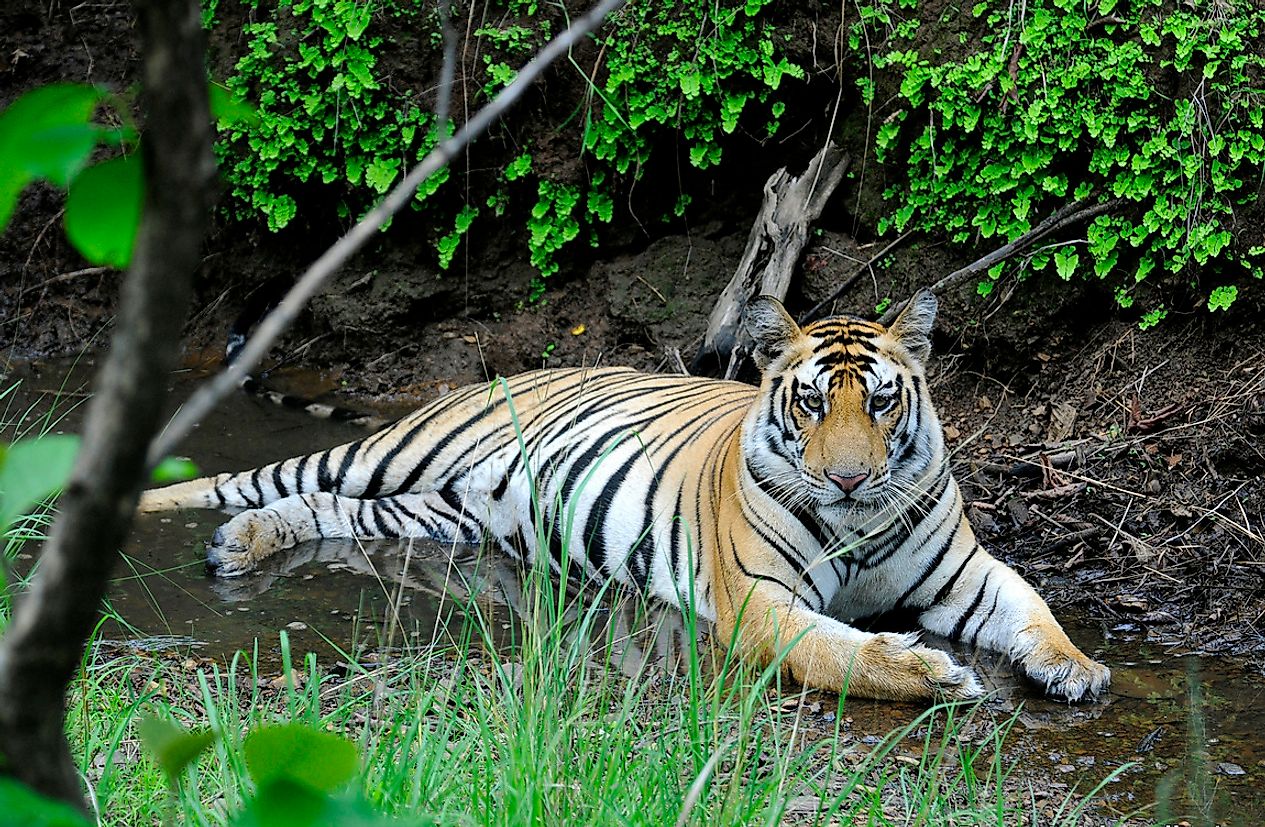
The tiger is a species that has the entire world under its spell. It is perhaps the most popular wild animal in the world. Although it occurs in only 13 tiger range countries today, it enjoys universal fame. People from all corners of the globe travel to catch a glimpse of this majestic striped predator in its wild habitats. In the countries of its occurrence like India, which is by far the world leader in tiger conservation, the tiger is both feared and revered. However, the shocking fact is that all this attention hasn't been able to save tigers from becoming an endangered species. Today, the world has just over 4,000 wild tigers. Over 70% of these tigers live in India and the tiger population in the country is steadily rising (from 1,411 in 2006 to 2,967 in 2018). The remaining 12 tiger range countries together have less than 30% of these magnificent carnivores. What is the secret to this success in a country with the world's second-highest human population? What does the future look for the tiger in India? What can the world learn from India's conservation stories?
All this and more will be explored in this article including the achievements and challenges of tiger conservation in India with the help of one of the country's leading wildlife conservationists, Dr. Anish Andheria. He is the President of the Wildlife Conservation Trust (WCT), an NGO doing outstanding work in catalyzing conservation of large carnivores and their habitats. Currently, WCT works in and around 160 Protected Areas across 23 states covering 82% of India’s 50 tiger reserves.
Although raised in the city of Mumbai, Dr. Andheria was never too far away from the forests and big cats. Tracking leopards in the Sanjay Gandhi National Park, a wilderness within the administrative limits of Mumbai city, was his favorite activity in his younger years. While pursuing a Ph.D. from the Institute of Chemical Technology, Mumbai, he also regularly participated in the estimation of tiger and prey populations in several tiger reserves of India. He also helped set up the 'Kids for Tigers', a conservation education program for Sanctuary Asia that reached 750 schools and impacted nearly a quarter-million children annually. As the leader of WCT, he has initiated conservation work in and around India's protected areas to ensure tiger conservation success. He also contributes to scientific studies, national and international publications on issues pertaining to tiger conservation. As an acclaimed wildlife photographer, he continues to raise awareness about the need to save all kinds of terrestrial ecosystems through his photographs.
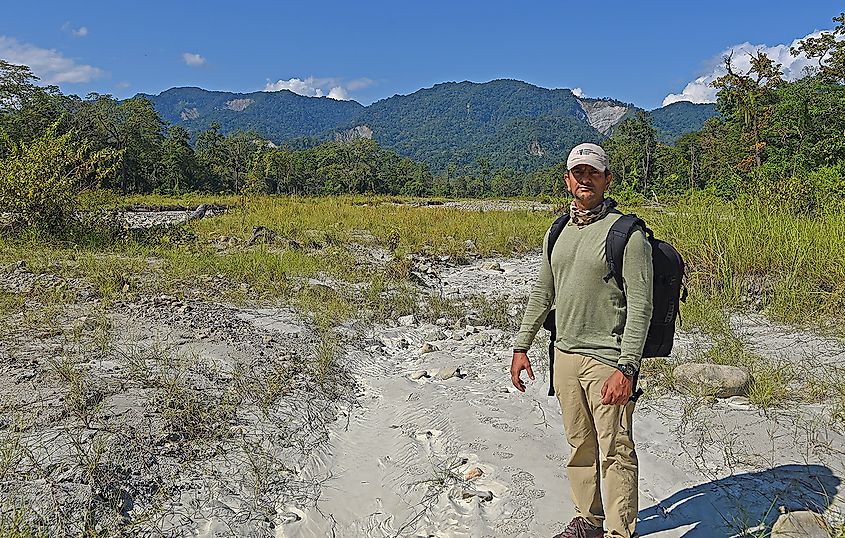
"Tiger Conservation" conversation with Dr. Anish Andheria
What is the "Tiger" to you?
The tiger is a majestic animal, impossible to ignore. However, as a naturalist, I feel every species is unique and if observed closely, can hook you for life. I am more enamored by the role the tiger plays in wildlife conservation - what we can do with the tiger in fostering wildlife education; consolidating protected areas: building capacities in the forest department staff and villagers; and spreading awareness about terrestrial ecosystems using the tiger as a guiding light, is what excites me.
The tiger alone plays a huge role in popularizing conservation in India. Without the tiger as a role model, conservation talk wouldn't have been a household matter in the country. The government, scientists and conservationists have merely piggybacked on the charisma of the tiger to secure large forested landscapes and the unlimited ecosystem services that emanate from those forests. Although I absolutely enjoy observing, studying and photographing tigers, I am equally inquisitive about birds and bees, not to forget trees and the humus that envelops the forest floor. Tiger to me is just a metaphor for conservation.
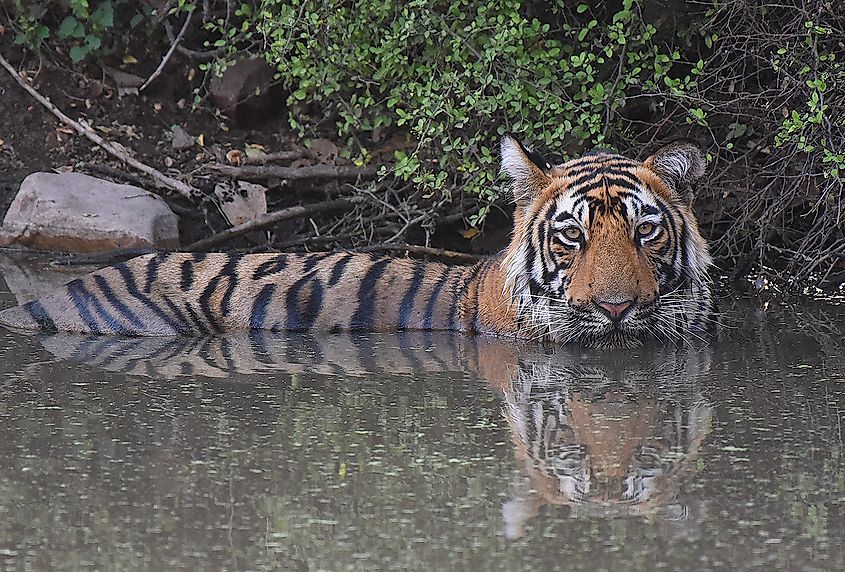
So, what makes the Tiger ‘tick’ in India?
The tiger is a large carnivore, a top predator in the ecosystem it lives in. It is distributed in nearly 2/3rd of Indian states. It occupies an important place in Indian culture and is associated with Hindu deities, and features prominently in mythological tales and folklores. It is the national animal of India and an extremely graceful species. All these factors contribute to making the tiger popular in the country.
From the conservation perspective, tigers are indispensable. The population of tigers is dependent on the population of wild herbivores. The latter need space, vegetation, water, and good quality habitats to thrive. So, only intact, undisturbed forests can support stable wild herbivore populations, which, in turn, facilitate the long-term survival of tigers. In other words, the tiger is a proxy for all kinds of forests from mangroves to arid scrub to deciduous to evergreen to high-altitude snow-laden ones.
It is also easier to study tigers. Its distinct stripe pattern helps identify one individual from the other making it ideal for estimating population size using camera trap studies. It is a solitary animal that is often sighted near water bodies. Tigers also have large territories, especially male tigers. Thus, protecting tigers, in one stroke, translates to protecting large areas that include all other species of flora and fauna found in that area.
Forests are also the source of many rivers. Conserving tiger-inhabited landscapes also means protecting the catchment area of these rivers. To sum up, tiger conservation helps stop the destabilization of an entire ecosystem. Hence, it is called an umbrella species.
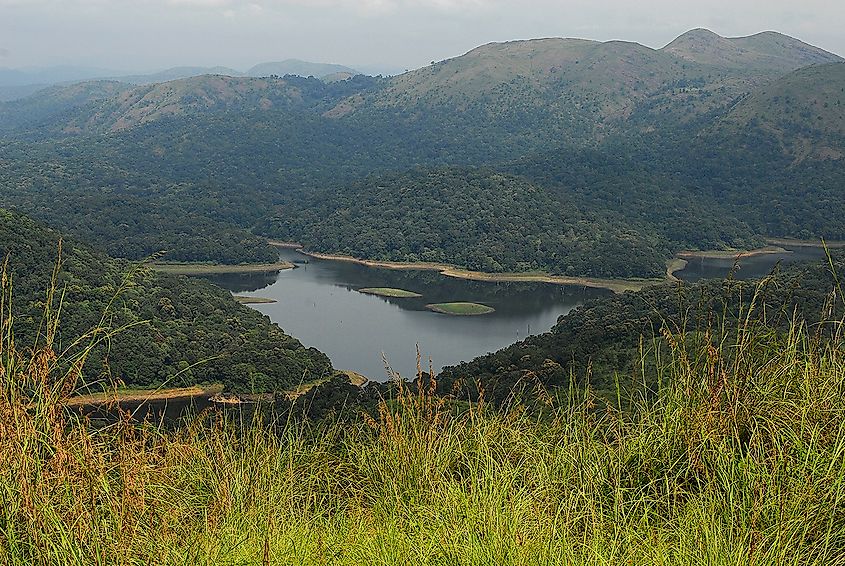
How easy or difficult is the life of the tiger? Does it face threats from species other than humans in its native habitat?
Although an apex predator, a tiger's life is riddled with extreme challenges. The nature of threats vary through the different stages of its life. As small cubs, tigers can be killed by almost anything including birds of prey, snakes, wolves, jackals, wild dogs, leopards, etc. Without the protection of the tigress, the cubs wouldn't survive. Other tigers, both unrelated male and female tigers, will also kill the cubs if an opportunity arises. The cubs are completely dependent on their mother for nearly 18 months. Their father too plays a significant role in protecting them from other male tigers. Competing males kill cubs often to bring the tigress into estrus so that they can pass on their genes into the next generation. Diseases, starvation due to lack of sufficient prey, and natural calamities can also lead to their death. Of course, the death of their mother before they reach 16-18 months almost always results in their death. Although, there is evidence that in remote cases, fathers take over the duty of rearing cubs if the tigress dies prematurely.
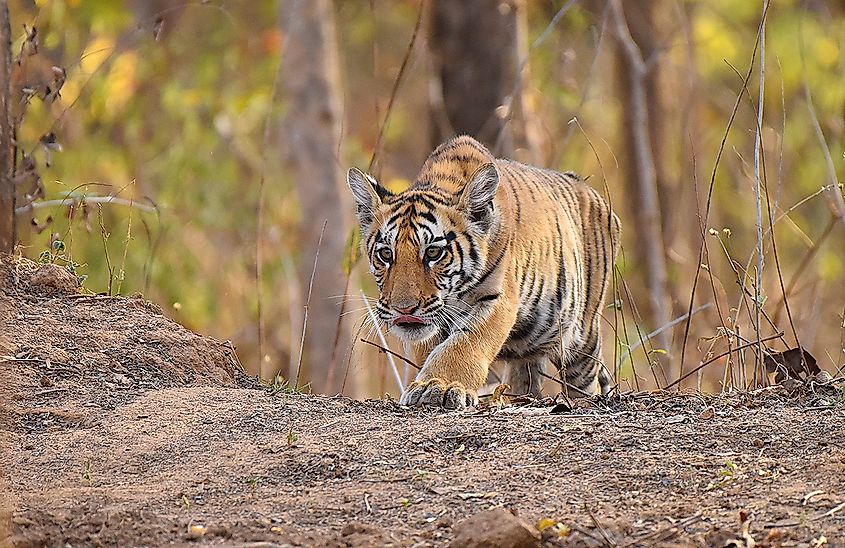
As adults, tigers continue to deal with life-threatening situations. Adult male tigers often engage in territorial fights that might lead to fatal wounds and the death of one or both of them. Other wild animals such as elephants, crocodiles or even large-sized prey such as gaur and wild pig can also kill adult tigers.
Recently a tiger in the Kaziranga Tiger Reserve was found dead alongside a dead male wild pig. While the pig had tiger bite marks on his throat, the tiger's underbelly was heavily injured, probably as a result of the last-minute retaliation by a feisty prey. There are several instances of gaur crushing the ribs of the tiger. The tiger can break a bone or suffer a debilitating injury while running after prey or even fall off cliffs and die.
Porcupine quills can penetrate the tiger's face, forelimbs and throat leading to severely infected wounds, eventually starving the tiger to a painful death. Maggot-infested wounds and gangrene can claim a tiger's life. So, a tiger, despite being at the top of the food chain, can be killed by anything ranging from a 4,000 kg elephant to a few milligrams of maggot. Contrary to popular belief, their life, like that of other wild animals, is marred with innumerable challenges from the time they are born.

And what happens when human beings enter the scene?
In a healthy ecosystem, human intervention is not needed to save tigers. The law of nature works best and keeps the species alive just as it ensures the survival of the species that the tiger preys upon. However, when humans enter the scene, the threats move up to a different scale making it almost impossible for the species to exist without adequate protection. Through centuries, hunting of tigers and their prey, habitat loss, fragmentation, forest degradation, poisoning, electrocution, road and railway accidents have killed overwhelmingly large numbers of tigers and reduced their numbers to a paltry 4,000 worldwide. Their historical range has been reduced by over 95% due to human interference. That is the impact of humans on these big cats! And, not only humans but also "human's best friend", the dog, indirectly threaten tigers and other large carnivores. Free-ranging dogs, well-fed by humans, multiply fast and often kill wild prey such as deer, wild pig and antelope, leading to prey depletion for wild predators. They also pass on deadly diseases such as Canine Distemper Virus to tigers.
So, it is clear that humans are dangerous to tigers. How true is it the other way round?
The tiger is physically much stronger than a human. It is a carnivore - a very skilled predator. It is also faster, can camouflage well in its habitat, and is equipped with more powerful senses than us. All that means that if a tiger attacks a human, there is very little chance of escaping unscathed. Having said that, however, we must know that tigers do not treat humans as their natural prey. Tigers generally do not attack, kill, and eat humans. On the contrary, they tend to keep away from humans. Only on rare occasions do tigers prey on humans, either when they lose their ability to hunt natural prey due to old age or injuries or if a human being inadvertently reaches dangerously close to a tigress with cubs. But such cases are very rare. Unless forced into a confrontation by irresponsible human action or behavior, tigers avoid all kinds of interaction with humans.
So, tigers do not actively hunt humans but rather shy away from them. But what if a human encounters a tiger? Have you ever experienced such an incident?
I have been fortunate enough to come face-to-face with wild tigers several times as my work has taken me to healthy tiger-worthy forests. When you see the species that you admire standing in front of you on the same soil and breathing the same air as you, you cannot but help romanticize the feeling. However, there is the other part of you that is completely alert. A slight bit of discomfort caused to the animal by your involuntary movements can instigate it to attack you. When you are on foot and have a tiger nearby…. if your actions are interpreted as threatening by the tiger (which is easily two to four times heavier than you), it may take a few seconds for it to pounce on you. So, it is always important to respect wildlife and the laws of the jungle. When you enter a tiger forest, you must expect the unexpected. In my case, fortunately, all those tigers that I accidentally stumbled upon when on foot left me alone. But it might not always be the case. So, it is important to maintain a safe distance from wildlife. Enjoy their sightings but not invade their private space. This is easier said than done as our senses are far weaker than wild carnivores and barring rare occasions they will sense our presence before we do. So, if a tiger really wants to pull you down, it is almost impossible to avoid the eventuality. Nevertheless, I have not heard of any researcher being attacked by a tiger or many cases of tiger attacks on forest guards in my lifetime. This speaks volumes about the timid nature of the species.
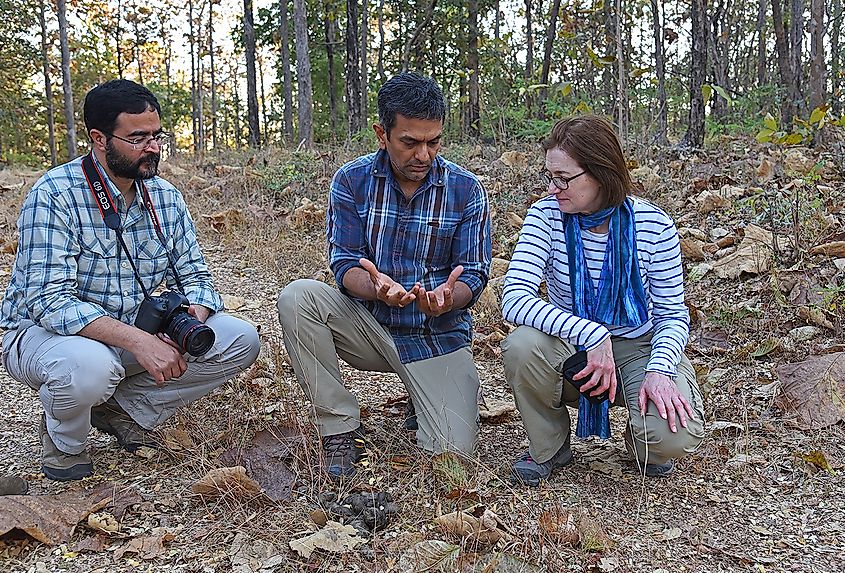
Tigers are protected within national parks and sanctuaries and human movements in such areas are strictly controlled. But what happens when tigers exit such areas?
As mentioned earlier, tigers are solitary and territorial animals. They occupy large territories (males patrol over 50 sq. km in tropical mixed deciduous forests, which is considered the best habitat for them) and are fairly mobile to guard their territory and to search for food and mate. Well protected habitats provide favorable conditions for tigers to breed and young tigers need to find their own territory. But here comes the challenge. Only about five percent of India is well protected. Tigers do not understand the administrative boundaries of national parks and sanctuaries. As they exit the limits of these protected areas, they become highly vulnerable. They might find it easy to prey upon livestock outside good quality forests and that exposes them to the wrath of people that might poison, electrocute, or lynch them.
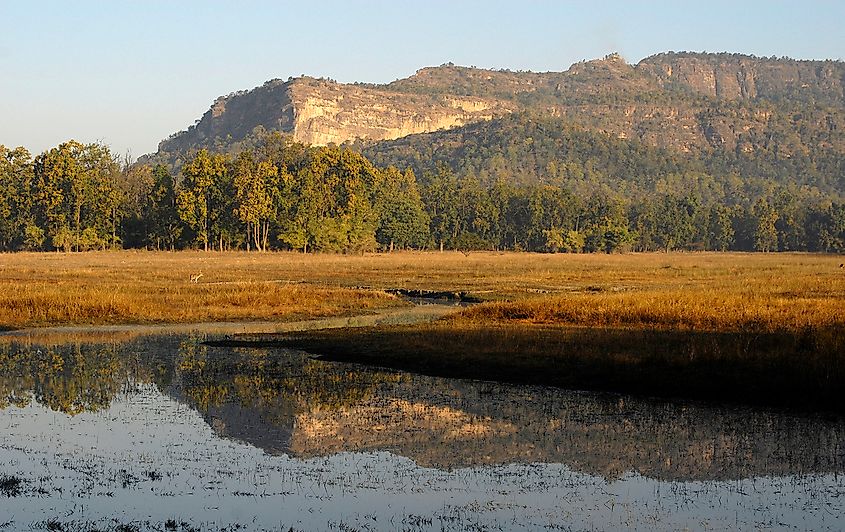
Tigers also face human-made barriers to their movement like linear infrastructure including roads, railways, canals and power lines. Vehicular collisions may kill or maim them. Not to forget that the threat from poachers is omnipresent, especially because of the heavy demand for tiger body parts in South and Southeast Asian countries including China and Vietnam. So, the overall survival rate of tigers slims down when they exit protected areas.
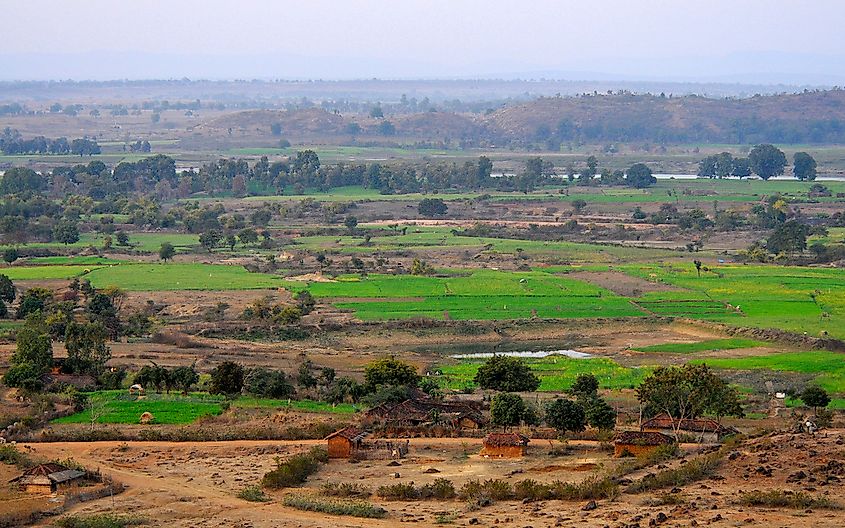
These issues seem quite serious. What can be done to mitigate them?
Indeed, the solution is a complex one. While the tiger population in India has gone up over the last 15 years, the overall population is still very small. Protected areas, good quality protection within some of these protected areas and impressive forest laws have helped curb the decline of tigers, but the long-term threats to the species remain. Tiger populations in India remain largely disconnected in pockets or islands of protected areas. Also, the average size of India’s protected areas is small. As a result, most of these areas have small tiger populations of only 10 to 25 adults. Research has shown that for a population to thrive or sustain itself over a long timeframe you need at least 20 breeding tigresses in that population, and that is hardly the case within most of India's protected areas.
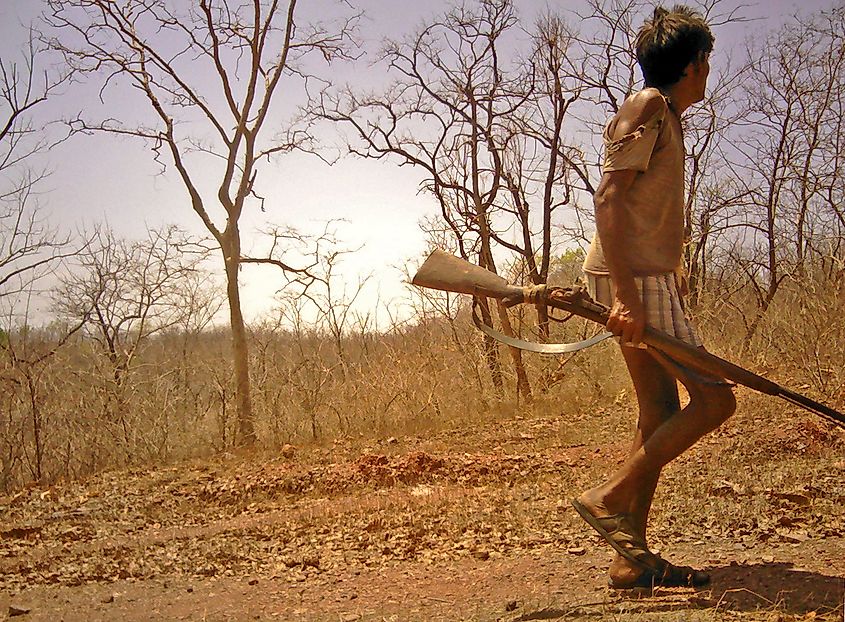
Any catastrophic event such as a natural calamity, an intense poaching event, or a deadly disease can finish off a small population in no time. Hence, it is important to provide safety to tigers outside protected areas in the form of well-protected corridors to allow secure immigration and emigration of tigers from one protected area to another. Safe passage of tigers through such corridors ensures tiger subpopulations remain genetically connected across large landscapes. Wildlife corridors in the form of contiguous forests interspersed with grasslands, rivers, plantations, or agricultural land, allow tiger subpopulations to stay connected. Without them, protected areas are like islands with highly vulnerable tiger populations.

Despite all these challenges and with a booming population, how has India managed to host the highest wild tiger population in the world?
A culture of tolerance and good protection laws work in unison to make tiger conservation possible in India. The Indian cultural belief of 'live and let live' expands to include all living beings. Here, animals and plants are not commoditized but instead considered as part of a single living system that also includes humans. Animals are often worshipped and feeding or taking care of animals is considered to be an act of virtue. Although such beliefs do not ensure complete protection of species, it leads to animals being valued as individual beings.
Uniquely, when the question of killing an individual tiger arises due to its negative impact on a particular human population there is a discussion or debate as to whether the animal was at fault or humans! People, in general, do not kill or hunt animals for the pleasure of it. However, when people do kill wildlife or other animals illegally, there are enough teeth in India’s wildlife protection laws to punish such miscreants. Though conviction rates are abysmally low, the fear of legal action does play its part in awarding safety to tigers.

Does India have the potential to support more tigers? If yes, how can the growing numbers be accommodated?
India has enough forestland that can serve as a habitat to growing tiger populations with the potential to support over 10,000 tigers. Despite a culture of tolerance, however, changing times, a growing human population, and demand for rapid development have increased the rate of negative interactions between humans and wildlife in and around wildlife inhabited landscapes. So even if there is adequate habitat to accommodate more tigers, baring a handful of multiple-use areas where local communities co-exist with tigers, in general, people do treat tigers as a threat to their subsistence and existence. A higher level of social acceptance is thus needed for tiger populations to grow. For that negative interactions between humans and wildlife must be minimized. A lot needs to be done in this regard.
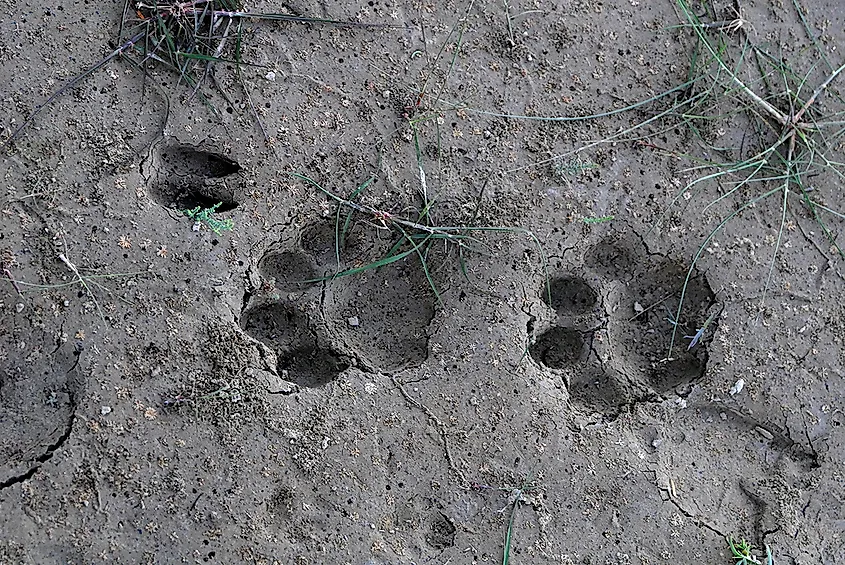
Do local communities play a role in tiger conservation? How can they be encouraged to preserve the forests and protect wildlife?
Local communities have lived with wildlife for centuries. Because of how development has progressed and populations have exploded, forests and wildlife including tigers have rapidly disappeared over vast tracts of the country. There is a tendency of people in general and also sometimes scientists/conservationists to hold the local people responsible for the degradation and loss of forests. However, it must be understood that every community has a unique relationship with the forest and its creatures. If the ecosystem has remained intact in some areas even in the 21st century, it means the local communities there have allowed it to happen. People in cities have a much greater ecological footprint than those living in villages in the forest-fringe areas and are indirectly responsible for the loss of vast tracts of forest due to their higher levels of consumption.
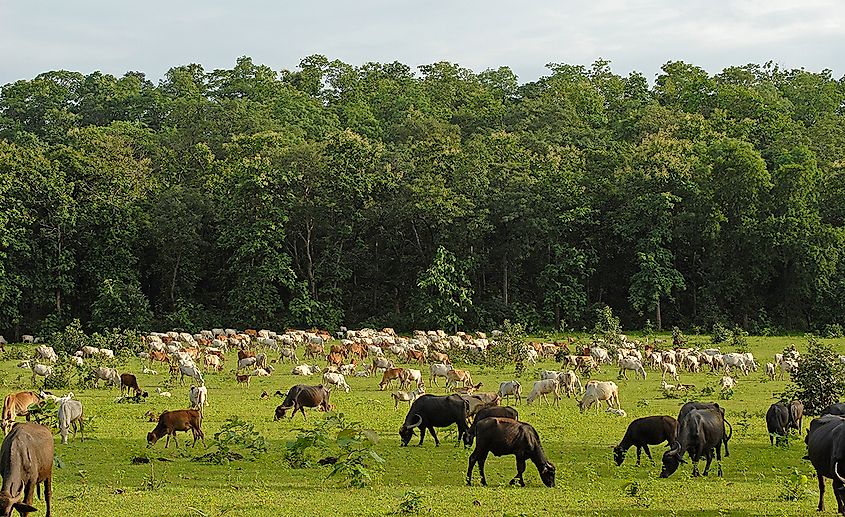
Having said this, it is true that with changing times, access to information, technological advancement, and a rapid rate of development of the nation have brought about a change in the aspirations of people. The lifestyle they aspire is altering their relationship with nature. This change in the wants of people needs to be addressed if wildlife including tigers needs to be saved. The culture has already taught them why forests are important but their beliefs can be bolstered with the help of several community engagement tools through awareness programs. Giving them alternative livelihood opportunities that do not necessitate depletion of forests or wild animals is important. Giving them access to good quality education and empowering women can open up more employment and income-generating opportunities that obviate the degradation of forests.

The governance structure needs to be improved so that funds that are meant to improve the conditions of local communities and execute wildlife conservation activities percolate down to those who need it the most. Ultimately, it is the responsibility of the government to enable people living alongside wildlife to choose between a life with or without intact ecosystems. The next few years will determine whether India will be able to protect future generations of people from cataclysmic climate events or destroy its ecological foundation forever for short-term gains. The fate of all forested landscapes and tigers living outside protected areas thus depends upon the developmental trajectory that the country decides to embark upon and on the effort invested in improving the living condition of marginalized communities residing in remote, forested areas.
Many tigers in India are given human names that make them quite popular. Does that act as a conservation aid or hindrance?
There are both pros and cons to naming tigers or other wild animals after humans. Past experiences show that when recognized by human names, people develop a stronger bonding with animals. They take more interest in the animal and its behavior and physical characteristics. The species as a whole becomes better known to the general public. Also, the growing popularity of the tiger boosts tourism and that has direct economic benefits to the tourism sector and local communities.
However, one must remember that tigers are not humans. Naming them might also lead to them being wrongly assigned human values. Conserving the species as a whole demands a sound scientific approach. When people start attributing human values to tigers, misplaced emotions overflow. When a tiger causes problems to villagers, and sometimes even becomes responsible for multiple human deaths, urgent and strict action is the need of the hour. During such times, animal activists, tiger fanatics, and some members of the public intrude in the process of rapid removal of the identified injury- or death-causing tiger. They even go to the court to bring a stay on the all-important tiger trapping operation. Such actions have backfired in the past. Delayed action in the field leads to the tiger killing more people or angry villagers taking the law into their own hands in desperation. These are the people who are actually living with tigers and the fate of tigers often depends on them. When they suffer losses and see inaction, they may take their revenge on other tigers as well, putting the entire tiger population of the area under threat.
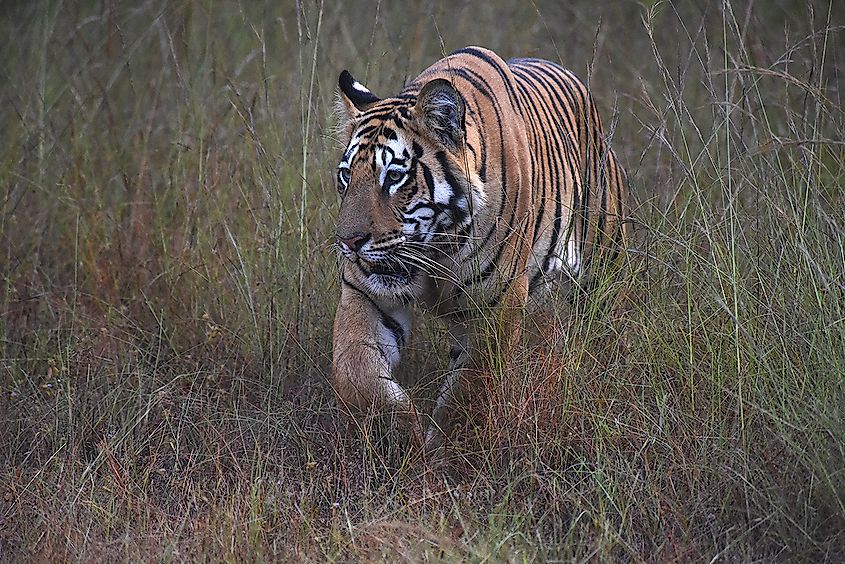
How does tourism contribute to tiger conservation?
Tourism increases the economic value of wildlife and that in turn encourages local communities, private individuals, companies and the government to protect wildlife. The tiger is an enigmatic species and will always attract tourists. People come from all over India and the world to see and photograph these gorgeous big cats. From buying air tickets to using local transport, staying in hotels and home-stays, dining in restaurants, shopping for souvenirs and taking safaris in the forest, tiger tourism benefits multiple businesses across international borders. Tigers are such magnets that people want to visit the tiger reserves repeatedly.
Tiger tourism also makes people more interested in the species. Many who come just to see a tiger fall in love with the entire forest. They learn to value wildlife and carry this message back home. Another very important role of wildlife tourism is the employment it generates for local communities. This makes them more tolerant of tigers and other wild species. So, when economic interests are added to the culture of tolerance, the protection of tigers gets a boost.
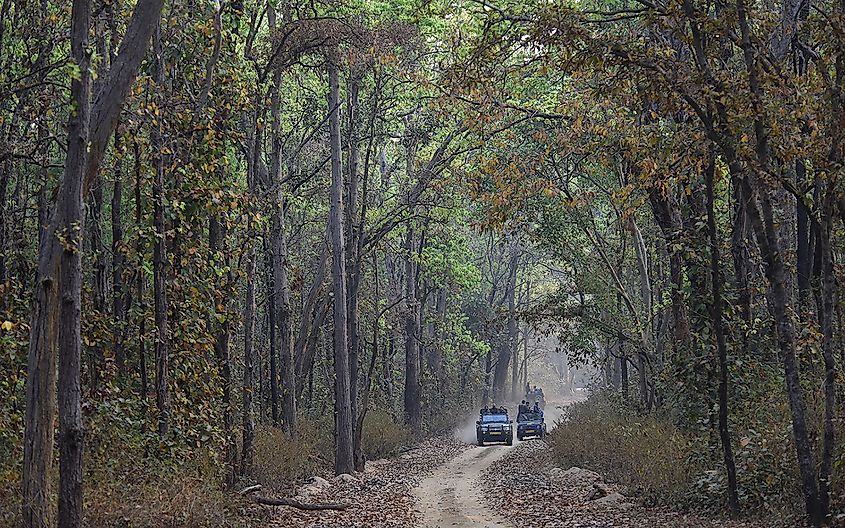
While tourism seems to be beneficial to conservation, is there a downside to it as well?
Yes, if not managed well, tourism can have harmful effects on wildlife. If big hotels come up compromising forested areas including wildlife corridors, then it becomes a problem. Fencing around large tourist properties coming up in wildlife habitats creates mobility issues for wild animals including tigers. When tourism is low intensity; benefits local communities; has a low ecological footprint; and follows environment rules and regulations, it benefits wildlife in the long run. Else, it would be like any other industry damaging forests and, in turn, tigers.
Can photography also act as a tool to promote tiger conservation?
Yes, photography is one of the many tools used in conservation. In fact, camera trapping is a photography-based tool that helps estimate tiger densities and identify individual tigers. India carries out a nation-wide camera-based tiger estimation exercise in an area of 350,000 sq. km every four years. Photography is useful during human-tiger conflict situations to unambiguously know the identity of the animal involved in the conflict. These are some scientific uses of photography.
However, photography can also be used to attract people to tigers and tiger-related issues. When it comes to hobby photography, capturing tigers on camera and publishing these images on social media, newspapers, magazines and other print and online media helps popularize the species.

Which are your favorite places in India to photograph tigers?
Tigers are found in a wide variety of habitats in India such as the dry forests of Ranthambhore, dense mangrove swamps of the Sundarbans, grasslands of Kaziranga, mountain forests of the Dibang Valley, deciduous and evergreen forests of peninsular India and more. Photographing them in each of these habitats offers unique experiences. However, some places, provide easier access to tigers than others. For example, the dry forests and sparse vegetation of Ranthambhore offer an excellent opportunity to photograph tigers, as tigers are more visible there.
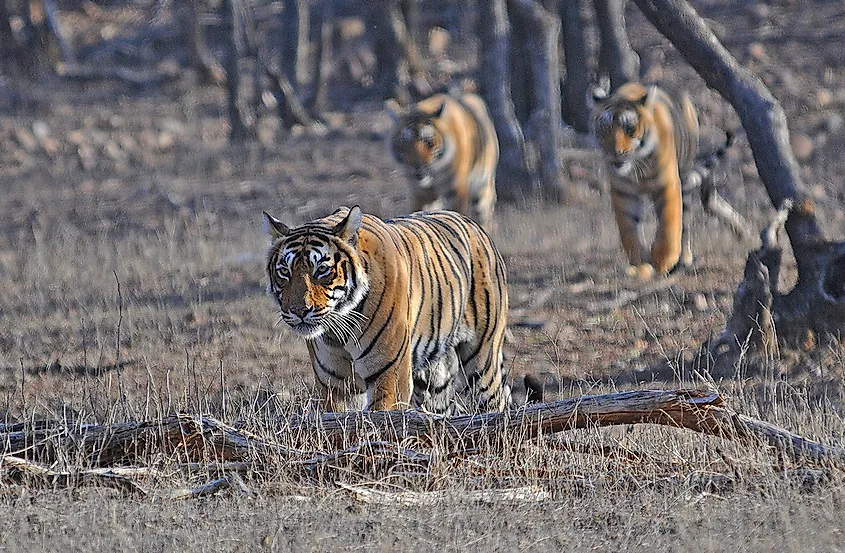
Tadoba in Maharashtra, Bandhavgarh, Kanha, Pench and Panna in Madhya Pradesh, Nagarahole and Bandipur in Karnataka and Corbett in Uttarakhand offer good tiger sighting and photographing opportunities. But then, the thrill of watching the elusive tiger of the Sundarbans in West Bengal or catching a fleeting glimpse of the striped cat amidst the tall grasses of Kaziranga in Assam is unparalleled.
How can an individual contribute to tiger conservation?
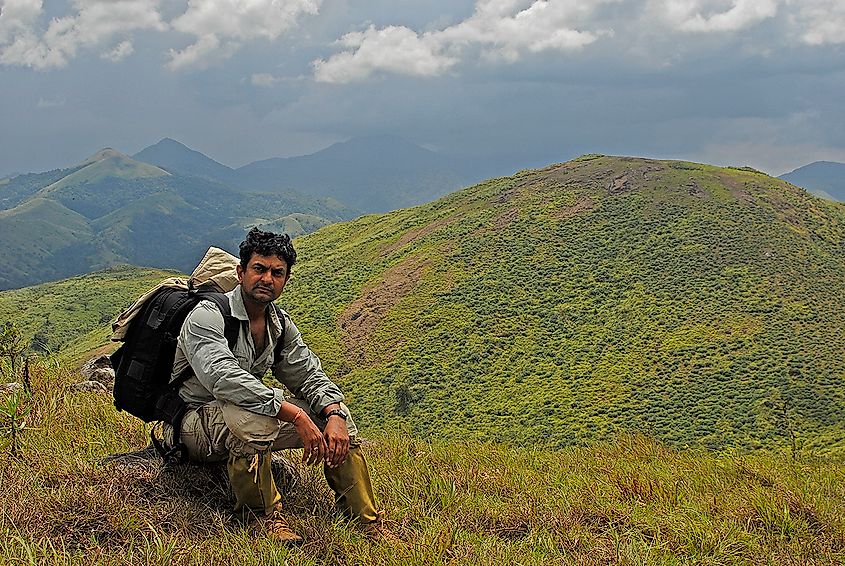
Tiger conservation is an extremely complex field and you need professionals if you want to bring about concrete outcomes. It cannot be learned in the classroom… one has to be out in the field to execute it. It demands physical and mental strength, patience, perseverance, willingness to get out of your comfort zone, spend long periods in challenging terrain and weather conditions, and ability to seamlessly interact with stakeholders from various strata of society, and above all, a sound knowledge of the forest and wildlife.

So, not everyone can make a direct contribution to conserving the species. Having said this, it is possible for everyone to indirectly bring about a positive change. People need to understand how they can align their profession with protecting tigers. For example, lawyers can help fight wildlife-related cases. Writers, musicians, singers, photographers, painters, and others can use their talent and creativity to create greater awareness about the need to save tigers. Just educating family and friends about tigers can also help. People can contribute by simply cutting down their carbon footprints.
What is your message to the world about why we need tigers?
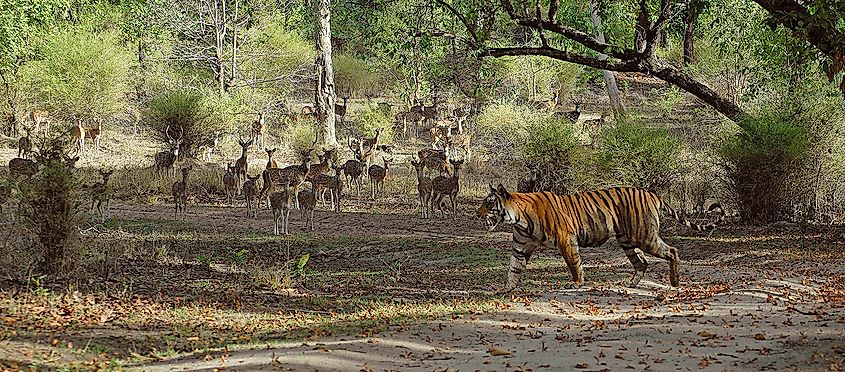
Tigers help stabilize forest ecosystems. They are needed to keep the population of wild herbivores in check. A healthy forest with an adequate wild prey population supports a stable tiger population. Tiger protection in turn helps conserve forests replete with innumerable wild species of flora and fauna found in those habitats. And, forests provide us a plethora of ecosystem services in the form of clean air and water, food, forest produce such a bamboo, honey, lichen, fruits, etc., temperature regulation, pollination, seed dispersal, sequestration of carbon, fuelwood, fodder for livestock, medicines, disease-resistant wild varieties of food grains, protection from extreme weather events, inspiration to follow artistic pursuits, and above all mental peace. According to some scientific estimates, an investment of one rupee in the protection of tiger habitats in India can give a return of between 200-530 rupees worth of ecosystem services to human beings!
Another very important thing to remember is that if we cannot save one of the most charismatic wild species like the tiger, other species including plants do not stand a chance in an ever-changing planet. If we lose tigers, lions, jaguars, cheetahs, rhinos, gorillas, orangutans, elephants, whales and sharks, which are the so-called "iconic" species, then thousands of other lesser-known ones will disappear even before we know of them. Thus, the tiger is a symbol of hope for a brighter future and successful tiger conservation is an indicator that we can fight climate change and other environmental issues plaguing our planet today.











